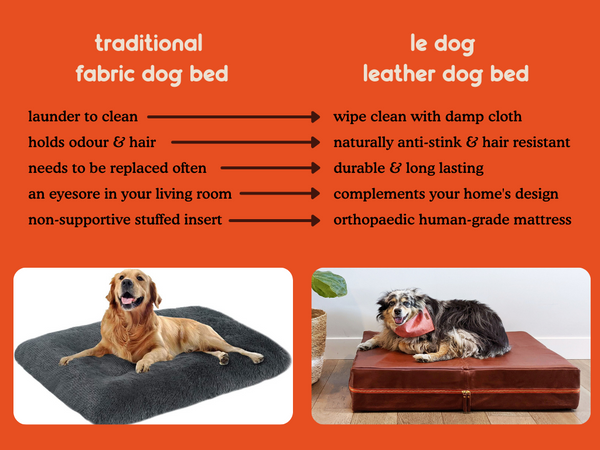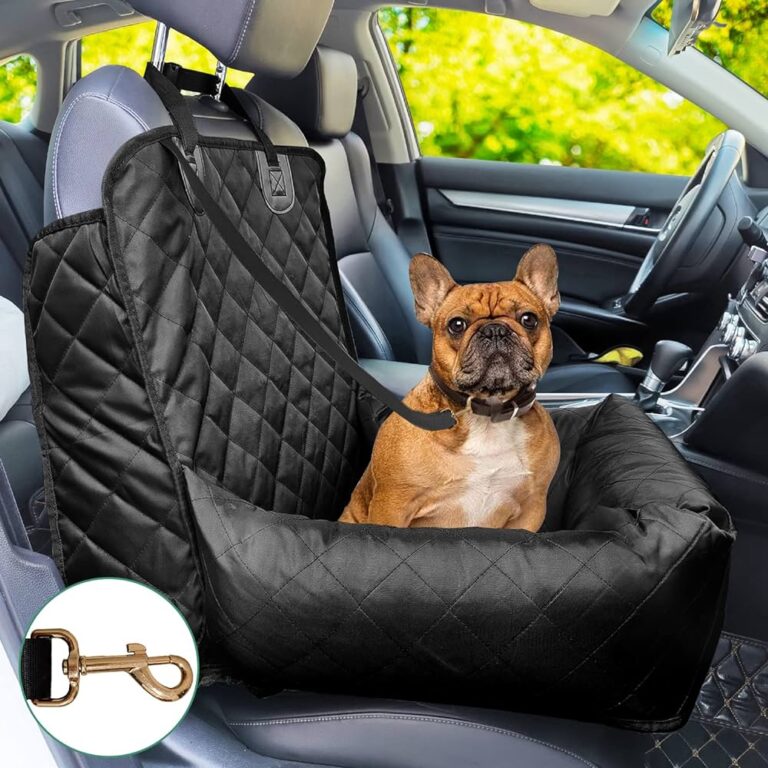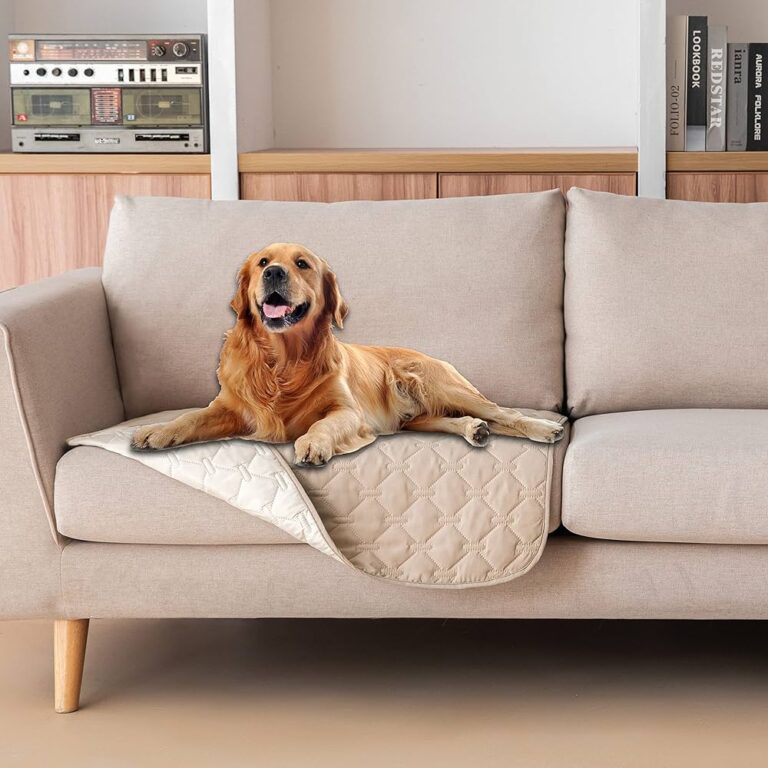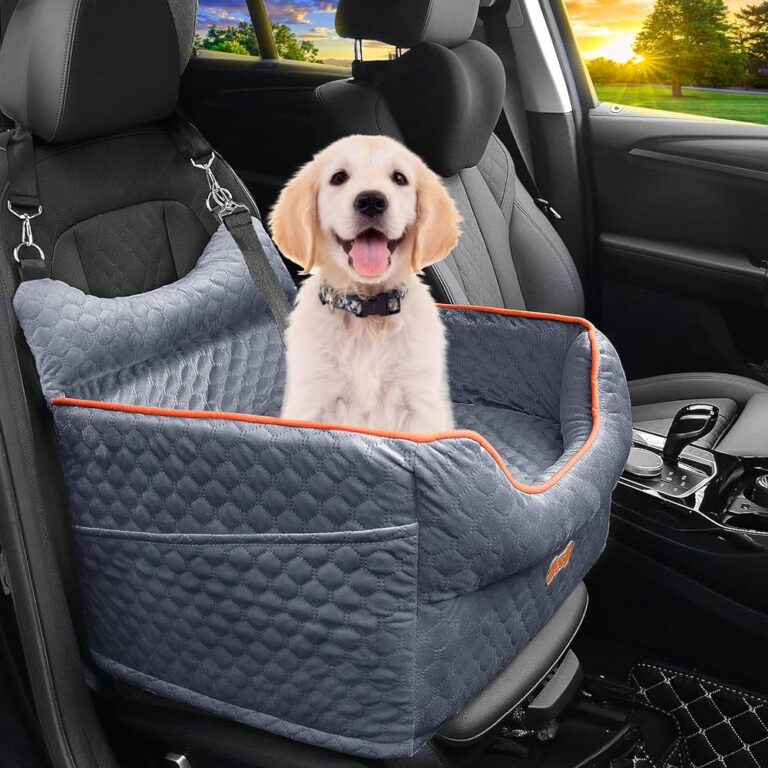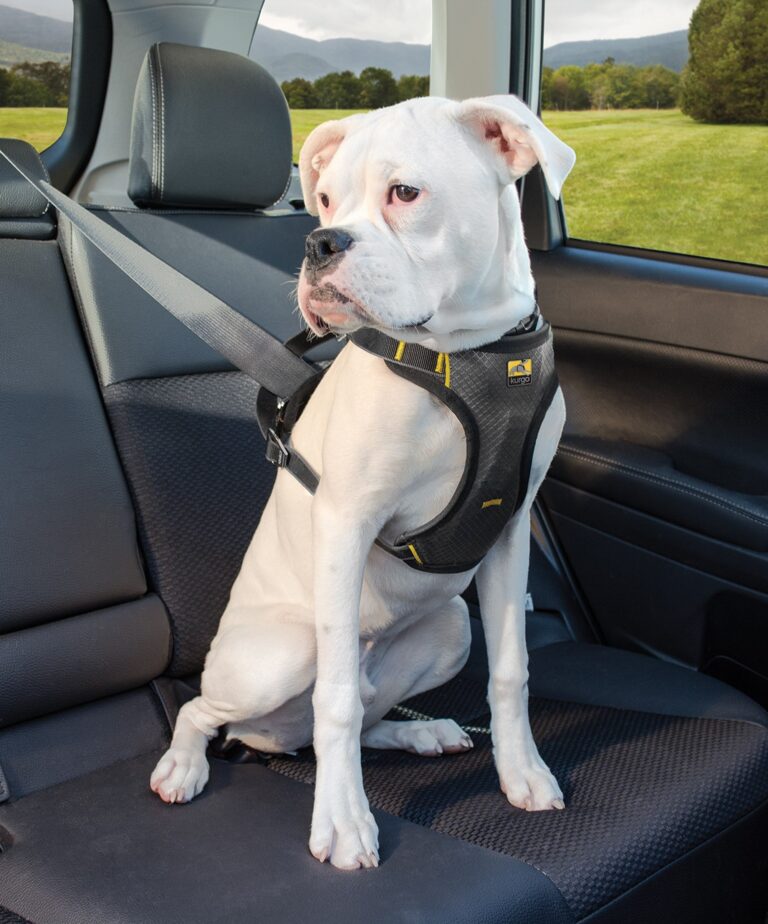Where Should Dog Ride in SUV? Safety & Comfort Tips
For safety, dogs should ride in the back seat of an SUV secured with a harness or in a pet carrier. This practice helps prevent distractions and keeps the dog safe in case of sudden stops or accidents.
When traveling in an SUV with your furry companion, ensuring their safety is a top priority. Knowing where your dog should ride in the vehicle can make a significant difference in their well-being and the overall security of everyone in the car.
By following some simple guidelines and using the right equipment, you can create a comfortable and secure space for your dog during car rides. Let’s explore the best practices for transporting your dog in an SUV to make your journeys enjoyable and stress-free for both you and your beloved pet.
Introduction To Safe Dog Travel
When it comes to traveling with your furry friend, ensuring their safety and comfort should be your top priority. Whether you’re planning a short trip or a long journey, it’s essential to consider where your dog should ride in your SUV. In this blog post, we will explore the importance of safety and comfort for your canine during car rides.
Importance Of Safety
Keeping your dog safe while traveling is crucial for their well-being. Here are a few reasons why safety should be a priority:
- Prevent accidents: Securing your dog properly can help prevent accidents or distractions that may lead to unsafe driving conditions.
- Minimize injuries: In the event of sudden stops or accidents, a restrained dog is less likely to get injured or cause harm to passengers.
- Escape prevention: By keeping your dog in a designated area, you can prevent them from jumping out of the car and getting lost or injured.
Comfort For Your Canine
Ensuring your dog’s comfort during car rides is essential for a stress-free journey. Here’s how you can provide a comfortable travel experience:
- Proper seating: Provide your dog with a designated seating area that suits their size and allows them to sit, lie down, and turn around comfortably.
- Temperature control: Maintain a suitable temperature inside the SUV by using air conditioning or opening windows to ensure your dog doesn’t overheat or get too cold.
- Familiar items: Bring along familiar items like their favorite blanket or toy to provide a sense of security and familiarity during the ride.
Remember, every dog is different, so it’s important to assess your dog’s specific needs and preferences when deciding where they should ride in your SUV. By prioritizing their safety and comfort, you can make car rides an enjoyable experience for both you and your furry companion.
Assessing Your Suv’s Space
Evaluating Cargo Space
Before deciding where your dog should ride in your SUV, it’s important to evaluate the cargo space available. If your SUV has a spacious cargo area, it may be the ideal location for your furry companion. Adequate cargo space allows your dog to move around comfortably and ensures that they won’t obstruct your view while driving.
Passenger Seat Pros And Cons
Considering the passenger seat for your dog in an SUV has its pros and cons. The advantage of the passenger seat is that it allows you to keep an eye on your dog and provide them with comfort and security. However, it’s essential to consider the safety implications of having your dog in the front seat, especially if airbags are present.
Harnesses And Crates: Secure Options
Ensure your dog’s safety and comfort while riding in an SUV by using secure options such as harnesses and crates. These reliable tools provide peace of mind for both you and your furry friend during car journeys.
When it comes to traveling with your furry friend, it’s important to ensure their safety and comfort. One of the most important decisions you’ll make is where your dog should ride in your SUV. Harnesses and crates are two secure options that can help keep your dog safe and secure during car rides. Let’s take a closer look at the types of harnesses available and how to select the right crate for your dog.Types Of Harnesses
There are several types of harnesses available, each with its own benefits and drawbacks. Here are some of the most common types of harnesses you can choose from:| Type of Harness | Description |
|---|---|
| Standard Harness | A basic harness that wraps around your dog’s chest and shoulders and clips to the seat belt. |
| Vest Harness | A harness that looks like a vest and is more comfortable for dogs with respiratory problems or back issues. |
| Racing Harness | A harness used for sledding or skijoring that offers more support and padding than a standard harness. |
Selecting The Right Crate
If you choose to use a crate, it’s important to select the right size and type for your dog. Here are some tips to help you choose the right crate:- Measure your dog’s length and height to ensure the crate is the right size.
- Choose a crate made of durable materials that can withstand wear and tear.
- Consider the type of crate, such as a plastic or wire crate, and choose the one that’s most comfortable for your dog.
Barrier Systems For Open Spaces
Barrier systems for open spaces can provide a safe and secure ride for dogs in SUVs. Installing a barrier between the back seat and cargo area can prevent the dog from jumping into the front seat or getting injured in case of an accident.
It is important to research and choose a barrier system that is compatible with your vehicle and meets safety standards.
When it comes to traveling with your furry friend in an SUV, ensuring their safety and comfort is of utmost importance. One key aspect to consider is where your dog should ride in the vehicle. Open spaces within an SUV can pose risks to your dog’s safety, as they may be prone to moving around or even jumping out of the vehicle. This is where barrier systems for open spaces come into play, providing a secure and designated area for your dog to ride in. Let’s explore the benefits of using such barrier systems and some installation tips to ensure a safe and enjoyable journey for both you and your canine companion.Benefits Of Using Barriers
Using barrier systems in your SUV offers several advantages for both you and your dog. These benefits include:- Safety: Barrier systems create a designated space for your dog, preventing them from roaming freely within the vehicle. This reduces the risk of accidents or injuries caused by sudden movements or distractions.
- Distraction-free driving: With a barrier in place, you can focus on the road without worrying about your dog getting in the way or attempting to climb onto your lap.
- Preventing escape: Dogs can be curious creatures, and an open space in an SUV might tempt them to jump out. Barrier systems act as a protective barrier, preventing your dog from escaping the vehicle.
- Comfort: By providing a designated area, barrier systems offer your dog a sense of security and stability during the ride. They can relax and enjoy the journey without feeling anxious or restless.
Installation Tips
Installing a barrier system in your SUV is a relatively straightforward process. Here are some installation tips to help you get started:- Measure your vehicle: Before purchasing a barrier system, measure the dimensions of your SUV’s open space. This will ensure you select the right size barrier that fits securely.
- Choose a suitable barrier: There are various types of barrier systems available, such as mesh barriers, metal grates, or adjustable partitions. Consider your dog’s size, behavior, and any specific requirements when selecting the most suitable barrier for your needs.
- Follow the manufacturer’s instructions: Each barrier system may have specific installation instructions. Follow these instructions carefully to ensure a secure and stable installation.
- Regularly check the barrier: Once installed, periodically check the barrier system to ensure it remains securely in place. Over time, vibrations or movements during travel may loosen the barrier, so it’s important to make any necessary adjustments or tightenings.
Climate Control And Ventilation
When traveling with your dog in an SUV, maintaining temperature and ensuring proper airflow is crucial.
Maintaining Temperature
Keep the interior of the SUV at a comfortable temperature for your dog.
Ensuring Proper Airflow
Allow for sufficient ventilation in the vehicle to keep the air fresh.
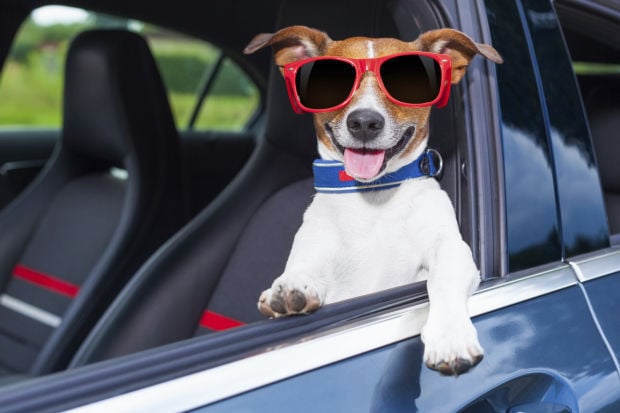
Credit: www.nwitimes.com
Safety Precautions For Rides
Ensure your dog’s safety in an SUV by using a pet harness, crate, or barrier to prevent distractions. Place the dog in the backseat to avoid airbag injury, and secure the crate or harness to the vehicle. Always restrain your pet to protect them and other passengers during the ride.
Avoiding Distractions
When it comes to taking your furry friend on a ride in your SUV, it’s important to take safety precautions to ensure that both you and your dog are safe. One important safety measure is to avoid distractions while driving. Distractions can come in many forms, such as a barking dog, a toy rolling around the car, or even your own phone. To avoid these distractions, make sure your dog is properly secured in the back seat with a seatbelt or a crate. You can also keep toys and other distractions out of reach and turn off your phone or put it on silent mode.Preventing Injury During Rides
Another important safety precaution to take when taking your dog on a ride in your SUV is to prevent injury during the ride. This can be done by ensuring that your dog is properly secured in the back seat with a seatbelt or a crate. This will prevent your dog from flying forward in the event of an accident or sudden stop. You can also prevent injury by keeping the windows rolled up to prevent your dog from jumping out or getting injured by debris. Additionally, avoid letting your dog stick its head out of the window, as this can lead to eye injuries from debris.Summary
In conclusion, taking your furry friend on a ride in your SUV can be a fun experience, but it’s important to take safety precautions to ensure that both you and your dog are safe. Avoiding distractions and preventing injury during rides are two important safety measures that you can take to ensure a safe and enjoyable ride for everyone. So, next time you’re planning a ride with your dog, make sure to keep these safety precautions in mind to keep your furry friend safe and happy.Comfort Measures For Your Dog
Choosing Comfortable Bedding
When traveling in an SUV, it’s important to prioritize your dog’s comfort. Choosing a comfortable bedding is essential to ensure your furry friend enjoys the ride. Opt for a soft, cushioned bed that fits the size of your SUV and provides ample support for your dog’s joints. This will help prevent any discomfort or potential injuries during the journey.
Access To Water And Toys
Ensuring your dog has access to water and toys is crucial for keeping them content during the ride. Consider investing in a spill-proof water bowl to keep your dog hydrated without creating a mess in your SUV. Additionally, bring along their favorite toys to keep them entertained and alleviate any anxiety they may experience while traveling.
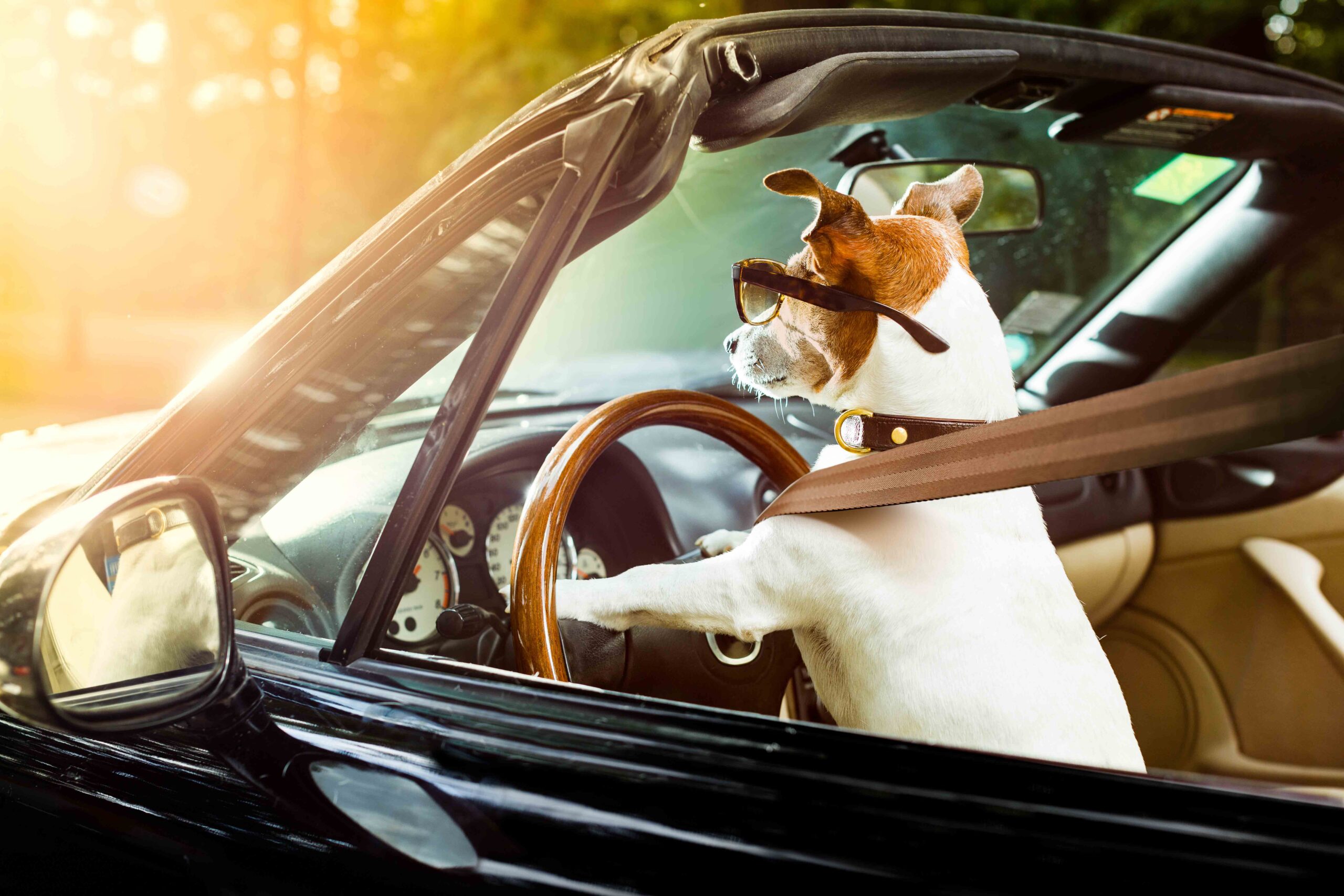
Credit: www.mymarylandauto.com
Training Your Dog For Car Rides
Training your dog for car rides is an essential part of ensuring their safety and comfort while traveling in an SUV. By acclimating your dog to the car and teaching them behavioral commands, you can create a positive and stress-free experience for both you and your furry companion.
Acclimation Techniques
When acclimating your dog to riding in an SUV, it’s important to start slowly and gradually expose them to the car environment. Begin by allowing your dog to explore the car while it’s parked, rewarding them with treats and praise for showing curiosity and calm behavior.
Once your dog is comfortable being inside the stationary car, you can start the engine and let it run while continuing to offer positive reinforcement. Gradually increase the duration of these sessions, always ensuring that your dog remains relaxed and at ease.
Behavioral Commands While Driving
Teaching your dog specific behavioral commands for car rides can help maintain a safe and controlled environment. Start by introducing commands such as “sit,” “stay,” and “lie down” while the car is parked, rewarding your dog for following these commands.
As your dog becomes more accustomed to the car, practice these commands during short drives around the neighborhood. Use positive reinforcement to encourage calm and obedient behavior, gradually building up to longer journeys as your dog becomes more confident and responsive to your commands.
Legal Considerations And Responsibilities
When it comes to traveling with your furry friend, it’s important to know the legal considerations and responsibilities of traveling with your dog in an SUV. Not only do you need to ensure your pet is safe and comfortable, but you also need to ensure you’re following state laws and regulations and considering insurance implications.
State Laws And Regulations
State laws and regulations vary when it comes to traveling with pets in vehicles. Some states require dogs to be restrained or in a crate while traveling, while others have no specific laws regarding pets in vehicles. It’s important to research the specific laws in your state and any states you may be traveling through to ensure you’re following all regulations.
Insurance Implications
Traveling with your dog in an SUV can also have implications on your insurance. If your pet is not properly restrained and causes an accident, your insurance may not cover the damages. It’s important to check with your insurance provider to see if they have any specific regulations or requirements when it comes to traveling with pets in your vehicle.
| Important Considerations: | What to Do: |
|---|---|
| Research state laws and regulations regarding traveling with pets in vehicles | Check the specific laws in your state and any states you may be traveling through |
| Check with your insurance provider about their regulations or requirements for traveling with pets in your vehicle | Contact your insurance provider to see if they have any specific regulations or requirements |
| Ensure your pet is properly restrained or in a crate while traveling | Invest in a proper restraint or crate to keep your pet safe while traveling |
- Always ensure your pet is safe and comfortable while traveling
- Consider investing in a proper restraint or crate to keep your pet safe while traveling
- Research the specific laws in your state and any states you may be traveling through
- Contact your insurance provider to see if they have any specific regulations or requirements

Credit: www.kurgo.com
Conclusion: Balancing Safety And Comfort
When it comes to finding the safest and most comfortable spot for your dog in an SUV, consider a spacious and well-ventilated area in the backseat or cargo area. Ensure their safety with a harness or crate, allowing them to enjoy the ride while also being protected.
Recap Of Key Points
When traveling with dogs in an SUV, ensure proper restraint and consider the safest location within the vehicle.
Dog safety harnesses or crates are recommended for securing your pet during the journey.
Avoid placing dogs in the front seat due to airbag risks and potential distractions.
Tailgate areas should be secured with barriers to prevent dogs from falling out.
Final Thoughts On Responsible Dog Travel
It’s essential to prioritize both safety and comfort when deciding where dogs should ride in an SUV.
Striking a balance between the two ensures a pleasant and secure travel experience for your furry companion.
Frequently Asked Questions
Where Is The Safest Place For A Dog In A Suv?
The safest place for a dog in a SUV is the back seat or cargo area with a secured crate or harness. This prevents distraction to the driver and ensures the dog’s safety in case of sudden stops or accidents.
Where Should Dog Sit In Suv?
Dog should sit in the back seat or cargo area of SUV. Use a harness or crate for safety.
How To Travel With A Dog In A Suv?
Secure your dog in a harness or crate. Place a pet seat cover. Keep windows partly open for ventilation. Pack essentials like water, food, and toys. Take breaks for your dog’s comfort.
How To Safely Put A Dog In The Back Of A Suv?
To safely put a dog in the back of an SUV, follow these steps: 1. Open the rear door. 2. Use a ramp if needed. 3. Lift the dog gently. 4. Secure with a harness or crate. 5. Close the door carefully.
Conclusion
When deciding where your dog should ride in an SUV, safety should always come first. Choose a secure and comfortable spot, such as a pet seat belt or a well-ventilated crate. Prioritize your furry friend’s well-being during car rides to ensure a stress-free and enjoyable travel experience for both of you.
- Can I Get in a Taxi Without a Car Seat? - January 26, 2025
- Can I Get Chlamydia From a Toilet Seat? - January 26, 2025
- Can I Get an Uber With a Car Seat? - January 26, 2025

